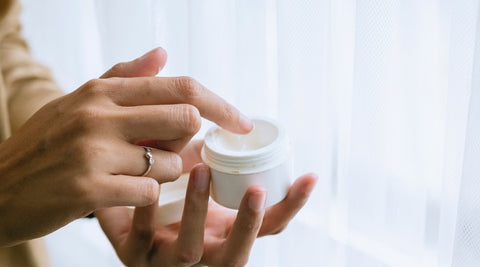Search “how to get a natural glow,” and you’ll find tanning oils, bronzing drops, and influencers praising their summer colour. But the reality? That golden tan is your skin screaming, “Mayday!”
Here’s why:
- UV rays damage your DNA
- Your body responds by producing melanin to protect itself
- That melanin darkens your skin - but it’s not a shield, it’s a bandage
TL;DR: A tan is like a fire alarm. It doesn’t mean things are fine - it means your skin’s under attack.
Tanning: A Breakdown of the Biology
Let’s geek out for a second. Here’s what’s really happening:
- UVB rays trigger melanin synthesis via DNA damage
- UVA rays go deeper, wrecking collagen and elastin, causing wrinkles and sagging
- Both create free radicals that age and inflame your skin
Your body responds with two types of pigmentation:
- Immediate darkening (UVA): rearranges existing pigment
- Delayed tanning (UVB): creates new pigment over a few days
But neither of these is harmless. Even the “protective” tan carries risk—because the damage has already happened.
Enter Hyperpigmentation
Uneven skin tone, dark patches, melasma, freckles, sun spots - they all start the same way: UV rays hit, your skin defends, and melanin goes into overdrive.
Your skin may tan evenly at first. But over time?
- Melanin production gets patchy
- Sun exposure builds up like credit card debt
- You’re left with blotchy pigmentation that doesn’t fade with the season
This is especially common in Indian skin tones (Fitzpatrick III–V), which are more prone to post-inflammatory hyperpigmentation, melasma, and sun sensitivity than we’ve been led to believe.
Uneven Skin Tone Is Getting Worse. Why?
Ever feel like your skin used to bounce back faster? That you tan differently now? You’re not imagining it.
Modern sun exposure is nothing like what our ancestors faced:
- Pollution, hormonal changes (hello, PCOS, birth control, pregnancy), and stress worsen pigment formation
- Most of us skip sunscreen on cloudy days, or rely on SPF in makeup (spoiler: it’s not enough)
- Indian skin tends to tan more easily and hold onto pigment longer
Melasma, once thought to be hormonal, now has strong links to UV exposure + inflammation.
Is Sun Exposure Really Bad?
Not entirely. You do need some sunlight, mainly for Vitamin D synthesis. But:
- You only need 10–20 minutes a few times a week
- Tanning beds? Worse than the sun, and officially classified as a Group 1 carcinogen
- If you’re low on Vitamin D, supplementing is safer and more effective
What You Can Do
1. Wear SPF Every. Single. Day.
Go broad-spectrum (UVA + UVB), SPF 30 or higher. Reapply every 2 hours. And yes, you need it indoors too (UVA comes through glass).
2. Add Antioxidants
Topical Vitamin C, niacinamide, and azelaic acid support brighter, more even skin. Internally? Look for supplements with colourless carotenoids, Vitamin E, or primrose oil to support photoprotection from within.
3. For treatment, dermatologists may recommend
Importantly: pigmentation issues like melasma take time, consistency, and professional care. There are no quick fixes - but there are clinically sound ones.
- Topicals like hydroquinone, kojic acid, azelaic acid, retinoids, or niacinamide
- Exfoliants to increase cell turnover
- In-office procedures like chemical peels, lasers, or light therapy
The Bottom Line
If you’re chasing a tan, you’re chasing damage. And if you’re treating hyperpigmentation without tackling the root (UV + inflammation), you’ll keep circling back.
But when you give your skin the support it needs - from the inside and outside - you shift from covering up damage to actually preventing it.
Sun-kissed skin? That’s the marketing. The science says: protect first, layer second.
References
- Narayanan DL, Saladi RN, Fox JL. (2010). Ultraviolet radiation and skin cancer. Int J Dermatol, 49(9), 978–986. https://doi.org/10.1111/j.1365-4632.2010.04474.x
- Sklar LR, et al. (2013). Topical antioxidants: Patents and skin-care products. Clin Dermatol, 31(4), 479–487. https://doi.org/10.1016/j.clindermatol.2013.01.007
- Sjerobabski-Masnec I, et al. (2020). Photoprotection: Facts and controversies. Clin Dermatol, 38(1), 55–62. https://doi.org/10.1016/j.clindermatol.2019.07.004
- Grether-Beck S, et al. (2021). Oral use of carotenoids and polyphenols for skin health. Nutrients, 13(9), 3021. https://doi.org/10.3390/nu13093021
- Krutmann J, et al. (2012). The skin aging exposome. J Dermatol Sci, 85(3), 152–161. https://doi.org/10.1016/j.jdermsci.2016.09.015
- Lin JY, et al. (2012). Photoprotection: A review of the current and future technologies. Dermatol Clin, 30(1), 149–166. https://doi.org/10.1016/j.det.2011.08.009


